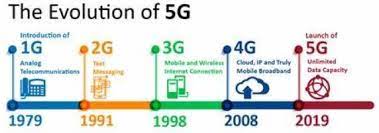In an era where connectivity is the heartbeat of our digital existence, the next frontier in wireless technology promises to revolutionize the way we communicate, work, and live. As we navigate through this uncharted territory, a myriad of innovations is set to redefine the boundaries of what we thought possible. In this article, we will delve into the key advancements that are shaping the future of wireless technology and explore the exciting possibilities that lie ahead.
5G Evolution:

At the forefront of the wireless revolution is the evolution of 5G technology. The fifth generation of wireless networks goes beyond mere speed improvements; it promises ultra-low latency, massive device connectivity, and unprecedented reliability. With 5G, users can expect faster download and upload speeds, seamless connectivity in densely populated areas, and enhanced support for emerging technologies like the Internet of Things (IoT) and augmented reality.
Beyond 5G – Exploring 6G:

While 5G is still rolling out globally, researchers and engineers are already setting their sights on the next horizon – 6G. Envisioned to be even faster and more efficient, 6G aims to push the boundaries of wireless communication with data rates that could potentially be a hundred times faster than 5G. This next-generation technology is expected to unlock new possibilities in areas such as holographic communication, advanced AI applications, and immersive virtual experiences.
Edge Computing:

As the demand for real-time processing continues to grow, edge computing is emerging as a critical component in the wireless technology landscape. By bringing computing power closer to the source of data generation, edge computing reduces latency and enhances the efficiency of wireless networks. This development is set to play a pivotal role in supporting applications that require instant response times, such as autonomous vehicles, smart cities, and mission-critical IoT devices.
AI Integration:

Artificial Intelligence (AI) is becoming increasingly intertwined with wireless technology, enhancing its capabilities and adaptability. AI algorithms are being employed to optimize network performance, predict potential issues, and personalize user experiences. As we navigate the next frontier, the synergy between AI and wireless technology will likely give rise to smarter, self-optimizing networks that can adapt to changing conditions and user behavior in real-time.
Security Challenges and Solutions:

As wireless technology evolves, so do the challenges associated with security. The increasing volume of data transmitted wirelessly makes networks more susceptible to cyber threats. Navigating this frontier requires robust security measures, including advanced encryption protocols, secure authentication methods, and proactive threat detection systems. As we explore new possibilities in connectivity, ensuring the integrity and confidentiality of data will be paramount.
Conclusion:
The next frontier in wireless technology is a thrilling landscape of innovation, pushing the boundaries of what was once considered impossible. From the ongoing rollout of 5G to the exploration of 6G, the integration of AI, edge computing, and addressing security challenges, the journey ahead is both exciting and challenging. As we navigate this uncharted territory, the promise of faster, more reliable, and smarter wireless connectivity opens up a world of possibilities, shaping the future of communication and connectivity in ways we have yet to fully comprehend. Embracing these advancements will not only redefine our digital experiences but also pave the way for a future where connectivity seamlessly integrates into every aspect of our lives. The next frontier is here, and the possibilities are limitless.


